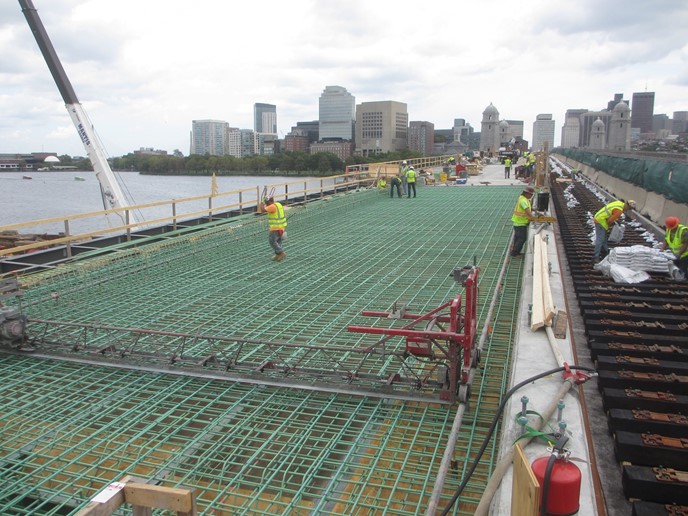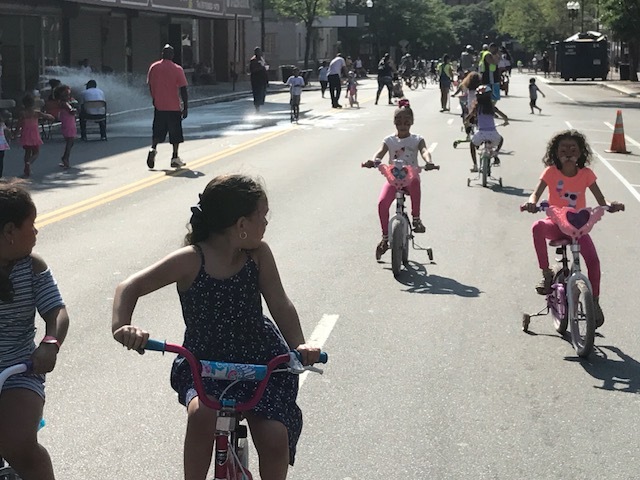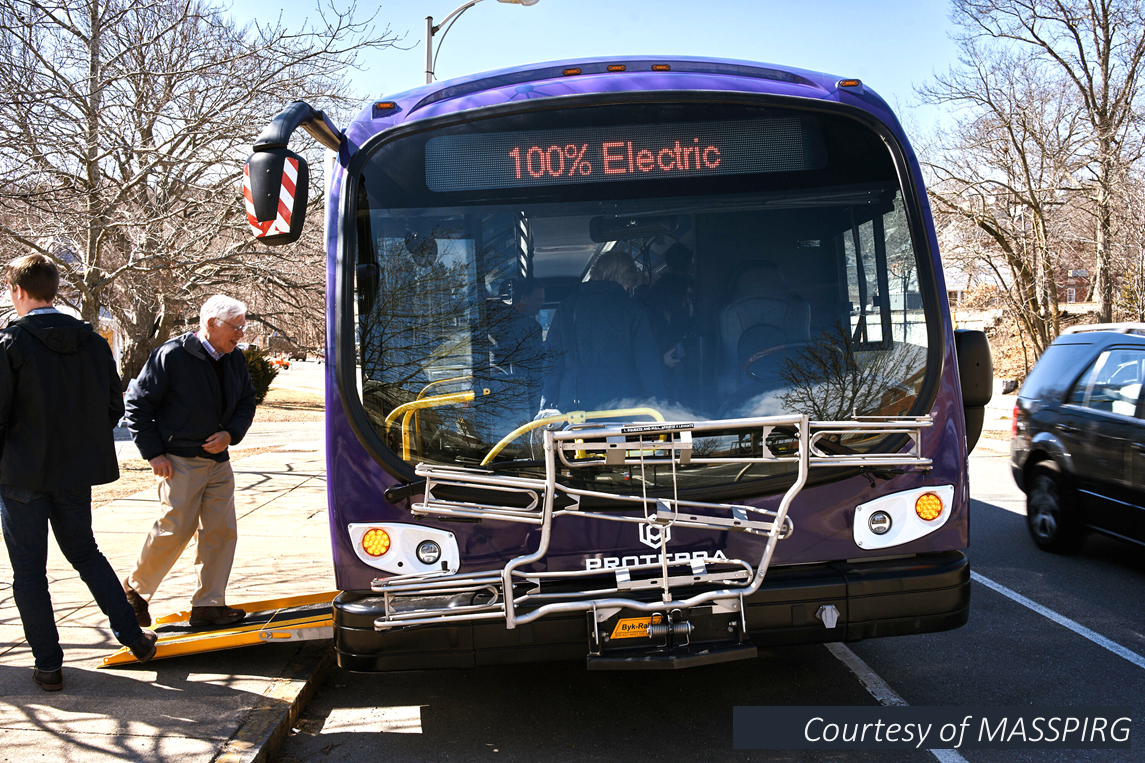A one page version of this report is also available here.
Massachusetts has long underinvested in our transportation systems. Our roads, bridges, trains, buses, ferries, and bike paths are not in the condition they should be. Opportunities to expand and improve these systems are stalled due to lack of dedicated funds. These funding shortfalls create serious harm for Massachusetts’ “three E’s:” the economy, equity, and environment. New sustaining revenue is needed, and no source of new funding is better scaled to meet the size of these unfunded needs than the Fair Share Amendment, which voters will decide on at the November 2022 ballot.
Transportation investment can improve the economy
Better transportation contributes to economic growth by reducing the time required for goods and people to travel and increasing safety and reliability. Doing so makes the economy more productive and improves our quality of life. More accessible, reliable, and affordable transportation also expands access to new markets and to a wider pool of workers.
Transportation in Massachusetts has suffered from longstanding problems that worsen our daily lives and hold us back from reaching our potential.1 Based on data just before the pandemic, U.S. News and World Report ranked Massachusetts’ transportation 39th out of the 50 states, and 47th when it comes to commute times. National studies have often found the Greater Boston region to have the worst traffic congestion in the nation. Drivers in the region lost an average of 149 hours to traffic congestion in 2019 – the equivalent of losing over three and a half weeks worth of work days and costing $2,205 per driver in lost time.

Consider the troubled state of Massachusetts bridges and the inadequate resources to bring them into good repair. Of the 7,868 bridges inventoried by the Massachusetts Department of Transportation, 641 were listed as structurally deficient as of March 2022. This means the most recent inspection revealed a major element of the bridge is in poor or worse condition. Though not deemed currently unsafe, these bridges become a source of lost time and added pollution when they are closed and traffic must be rerouted. The state’s Performance and Asset Management Advisory Council reported to the Legislature last year that Massachusetts is 4th worst in the nation for the percentage of poor bridges (by area). They concluded, “Additional bridge investment is needed to address the clear needs to core transportation infrastructure.” Governor Baker touted that $3 billion, made possible largely through federal infrastructure support, would enable 146 bridges across the Commonwealth to be fixed over the next five years; but that leaves a backlog of nearly 500 structurally deficient bridges that will remain unfixed, and additional bridges will fall into disrepair.2 The Commonwealth can borrow money to fix bridges by issuing bonds that will be paid back through dedicated transportation trust funds, but servicing more debt leaves these transportation funding sources less able to address other transportation needs.
According to data required to be reported to the U.S. Department of Transportation, in the 2020 reporting period 13.5 percent of bridges on the National Highway System in Massachusetts were in “poor” condition, as was 31.4 percent of non-Interstate pavement.
Public transportation is another area where needed funds are lacking. Public transit can reduce traffic congestion by replacing cars on the road. In can also improve access to affordable housing by making it easier for people to live outside of the biggest job centers without needing to drive into crushing traffic jams. Fifteen regional transit authorities operate across the state in a majority of municipalities, but often with service that is infrequent or covers too few routes. In addition, the Massachusetts Bay Transportation Authority (MBTA), which is the largest public transportation provider in New England and operates in communities with three-quarters of the Massachusetts population,3 faces some of the largest funding shortfalls. The MBTA projects that they will face growing operating shortfalls of hundreds of millions of dollars each year after July 2023. Additionally, the Massachusetts Taxpayers Foundation estimates the authority faces a $13 billion shortfall in capital funding compared to the authority’s projected repair and modernization needs. These estimates do not even include the additional costs of taking on new projects such as rapid rail connections between communities to expand and improve service. Looking at such expansions and improvements, the business group A Better City tallied $43 billion in projects across the Greater Boston region that are in the Massachusetts Department of Transportation (MassDOT) capital plan, consistent with completed long-term master planning efforts, or recommended by MassDOT-supported commissions, but which lack sources of funding.

Important innovations that were launched since the pandemic are in danger of being lost. A handful of regional transit authorities and selected MBTA bus routes have successfully boosted ridership and improved service by eliminating fare collection. Even as ridership dropped across public transit modes, the routes that serve environmental justice populations, low income residents, and people who are dependent on public transit dropped the least.4 Despite these successes, these transit authorities lack funding to continue these innovations once temporary federal pandemic funds are depleted. Moreover, recent inflationary pressures – particularly on wages and fuel – have hit them severely.5
Rural communities such as in Western Massachusetts face their own transportation needs that require additional funding. Funding for Chapter 90, the state’s main program to support road maintenance by cities and towns has been frozen without increases for ten years. New funding will be required if there is to be rapid East-West rail service between Boston and Springfield and Pittsfield. Installing an adequate network of new electric vehicle charging stations will be especially challenging in sparsely populated communities. Regional Transit Authorities (RTAs) outside of the Boston region often lack the resources to provide service during weekends or evenings. Improving transit service in these communities provides new ways to add customers and to draw from a larger workforce. With declining populations, many rural municipalities face an eroding tax base which further strains their ability to maintain their existing local infrastructure.
Greater transportation investment can improve economic and racial equity
The COVID-19 pandemic further widened the growing disparities between haves and have-nots in Massachusetts. Improved transportation can be an important part of reducing economic and racial inequities. Better transportation options help communities that are isolated from economic opportunity by connecting them to jobs and reducing wasted time. Transportation improvements can also reduce the long commutes and higher exposure to pollution in lower-income communities and communities of color.

Research has shown that regions where jobs are sprawled out in ways only accessible to cars tend to exhibit lower levels of upward mobility.6 Commute times, which grew about 10 percent statewide in the last decade, tend to be higher for people of color. Average Black and Asian commute times are longer than white commutes, partly because transportation options in their neighborhoods may be worse and because they may be less able to afford housing near their jobs. Commute times are especially high for Black people using public transit. According to a 2017 Massachusetts Area Planning Council analysis, Black bus riders averaged an additional 64 hours a year aboard MBTA buses compared to white riders, and Latinx riders averaged 10 hours more than their their fellow white riders.7 Better public transportation tends to connect people to jobs they might otherwise be unable to reach, which can help to reduce unemployment and poverty.8
An MIT experiment helps to confirm how greater access to transportation enables other opportunities for upward mobility and health. A set of low-income Supplemental Nutritional Assistance Program (SNAP) recipients were given MBTA cards that reduced their transit fare by half. Researchers found they took almost 30 percent more transit trips than a control group, increasing trips for work, medical appointments, and other travel.
Investments that reduce pollution from roadways can be especially beneficial for communities of color that in Massachusetts tend to have the greatest exposure to vehicle pollution. This pollution contributes to higher rates of asthma and other health problems. Children who go to school near highways are more likely to be Black or low-income and to have higher rates of asthma or other respiratory problems. Massachusetts studies of road-based particulate pollution find that Latinx, Black, and Asian residents have a quarter to a third more exposure to this pollution than white residents.9 Efforts to reduce transportation pollution can protect communities from disparate harm.
Greater transportation investment is needed to address climate change
Transportation is the largest and fastest growing source of climate emissions in Massachusetts. It accounted for 42 percent of greenhouse gas emissions in Massachusetts in 2017, the latest year with official data. Greater investment is needed to provide electric vehicle infrastructure and to provide reliable options for people to drive less and use public transportation, biking and walking more.
Since the 1950s, state funding for transportation has relied heavily on federal support. Federal pandemic aid provides temporary additional relief, especially for transit authorities. As part of its regular five-year transportation funding reauthorization, in 2021 Congress also somewhat increased funding levels. This Infrastructure Investment and Jobs Act is slated to provide Massachusetts with $2.5 billion for public transit across federal fiscal years 2022 to 2026. The final year amount is 36 percent more than the 2021 funding level. It is a meaningful increase, but hardly dramatic considering that the costs of vehicles, fuel, and professional drivers are rising briskly.
The most promising part of the new federal infrastructure act is not the incremental amounts of additional formula funding guaranteed to Massachusetts. The importance of the infrastructure act ultimately will depend on whether Massachusetts will compete successfully against other states for large new discretionary federal grants. As part of this process, states must offer state matching funds from state revenues. Winning federal grants will only be possible if the Commonwealth is able to demonstrate that Massachusetts is proactively supporting key projects with required transportation revenue.
A full bus can replace 50 cars on the road. A full train can replace hundreds. But people are reluctant to ride public transit if it isn’t well maintained, on-time, and travels where they want to go. The Commonwealth can also encourage fewer emissions from driving by creating an infrastructure for electric vehicle charging across the state, including for buses and trains. Unfortunately, earlier this year the state was still ordering fossil fuel school buses instead of cleaner electric models, to save on costs. MassINC polling found that half of voters think the state is lacking in preparedness for the effects of climate change.
By July 2022 the state is required by law to provide a “comprehensive, clear and specific” plan to achieve steep reductions in transportation emissions by 2025 and steeper reductions by 2030. Under the state’s climate roadmap law, total emissions in the state must fall to 50 percent below 1990 levels by 2030, at least a 75 percent reduction by 2040 and at least an 85 percent reduction by 2050.
Making travel greener by offering better choices will require major investment in lower-carbon transportation systems year after year. At present, however, there is no plan for how to pay for such investments.10 In their analysis of the MBTA’s looming funding shortfalls, the Massachusetts Taxpayers Association noted, “This $13 billion capital sources gap does not include sufficient funding to reduce greenhouse gas emissions nor to protect MBTA’s infrastructure from sea level rise and storm surge. Factoring in climate change costs, the MBTA is short approximately $20 billion for the period from 2023 through 2031. The federal infrastructure bill, if passed, will not meaningfully change this shortfall.”

Governor Baker’s plans to reduce emissions from transportation centered around the Transportation Climate Initiative, which would have used fees on wholesale gasoline to generate revenue for decarbonization of transportation. However, the initiative, which would not have provided sufficient revenue and depended on cooperation with other nearby states, did not materialize. The gas tax is a traditional and constitutionally established way to raise public funds for transportation. But increasing the gas tax enough to discourage driving and generate large scale revenue has several issues: it was decidedly unpopular even before the recent price surge; it would hit lower-income drivers hardest; and it would deliver dwindling resources over time as more vehicles become fuel efficient and electric.11
A solution on the horizon
With additional investment each year, our transportation systems can better support our economy, reduce economic and racial inequity, and help address climate change. These investments will require sustaining sources of revenue to make them possible. The state can issue bonds to help finance these investments, but they will need revenue to pay back such borrowing.
In 1974, Massachusetts voters amended the state constitution to specify that state gas taxes would be dedicated for certain kinds of transportation, a provision that has been faithfully followed since. The Commonwealth’s transportation funding system makes use of designated trust funds to ensure that money raised for transportation gets spent for this purpose: these funds rely on annual revenues dedicated for this purpose.
In November 2022 voters will choose whether to approve the “Fair Share Amendment,” a mechanism that would provide billions of dollars in new, recurring revenue dedicated to transportation and education.12 Transportation funds can be assigned to the existing transportation trust funds or a similar mechanism. They can be used both to support operations or for capital investment.
For many years, we have underinvested in transporation. For our economy, our equity, and our environment, this year there will be a chance to change course.
Acknowledgements: This paper benefits from the helpful comments, suggestions, and criticisms provided by: María Belén Power, Associate Executive Director, GreenRoots; Noah S. Berger, Administrator, Merrimack Valley Regional Transit Authority; Jessica Boulanger, Transportation Planner and Kasia Hart, Policy Analyst, Massachusetts Area Planning Council; Josh Ostroff, Interim Director, Transportation for Massachusetts; Sofia Owen, Staff Attorney, Alternatives for Community and Environment; and, Stacy Thompson, Executive Director, Livable Streets. All potential errors are the sole responsibility of the author.
A one page version of this report is also available here.
Notes
1 See Richard J. Lee and Ipek N. Sener, “Transportation Planning and Quality of Life: Where Do They Intersect?” Transport Policy (May 2016): pp: 146–155; and Ingrid E. Schneider, “Quality of Life: Assessment for Transportation Performance Measures,” Minnesota Department of Transportation, Office of Policy Analysis, Research and Innovation (Jan. 2013).
2 Commenting on the state’s new plan, the Massachusetts Department of Transportation’s 2022 Performance and Asset Management Advisory Council Annual Report (p.9) noted that “Significant investment in the inventory is still needed. Based on the percentage of poor structures, municipally-owned small bridges are nearly twice as bad as the state-owned inventory.”
3 According to data provided by the Massachusetts Area Planning Council, the 2020 population of the 176 communities in the MBTA service district is 5,278,716, which was 75.1 percent of the Massachusetts population of 7.03 million people.
4 Massachusetts Bay Transportation Authority, Report from the General Manager to the Fiscal and Management Control Board, slides 4-8 (October 5, 2020), https://cdn.mbta.com/sites/default/files/2020-10/2020-10-05-fmcb-E-report-from-general-manager-accessible.pdf.
<sup5 Overall transportation costs in the New England Region have increased 18.6 percent between February 2021 and 2022 (See Bureau of Labor Statistics, “transportation”). The U.S. Energy Information Administration, meanwhile reports that as of March 14, 2022, the cost of gasoline in New England rose 55.7 percent over last year and the cost of diesel rose 69.7 percent.
6 Reid Ewing, Shima Hamidi, James B. Grace, Yehua Dennis Wei, “Does Urban Sprawl Hold Down Upward Mobility?”, Landscape and Urban Planning (2016).
7 Massachusetts Area Planning Council, Metro Boston Regional Indicators: State of Equity, 2017 Update (2017), “Accessing Opoprtunity”. For a detailed blueprint for closing these gaps, including the addition of nearly 200 additional buses, see Livable Streets, 64 Hours: Closing the Bus Equity Gap (Sept. 2019).
8 Torrey Lyons and Reid Ewing, ”Does transit moderate spatial mismatch? The effects of transit and compactness on regional economic outcomes,” Cities (2019).
9 Union of Concerned Scientists, “Inequitable Exposure to Air Pollution from Vehicles in Massachusetts”(2019).
10 The Massachusetts Taxpayers Foundation notes in their analysis of the MBTA’s looming funding shortfalls that, “This $13 billion capital sources gap does not include sufficient funding to reduce greenhouse gas emissions nor to protect MBTA’s infrastructure from sea level rise and storm surge. Factoring in climate change costs, the MBTA is short approximately $20 billion for the period from 2023 through 2031. The federal infrastructure bill, if passed, will not meaningfully change this shortfall.”
11 MassBudget, “The Pros and Cons of Higher Gas Taxes, and How They Could Be Offset for Lower-Income Families,” (Oct. 2019).
12 The Department of Revenue conducted a 2015 estimate projecting 2019 additional revenues at a mid-point estimate of $1.9 billion. The Center for State Policy Analysis at Tufts University estimated that, after taking account of behavioral effects, the net increase in revenue would be about $1.3 billion in the first year. Other considerations could lead the revenue increase to significantly more than $2 billion annually. Income has become more concentrated among the highest incomes since 2015. See U.S. Census, “Income and Poverty in the United States: 2020,” (Sept. 2021), Table A-5. Selected Measures of Equivalence-Adjusted Income Dispersion: 1967 to 2020. Modeling conducted by the Institute on Taxation and Economic Policy suggest that first year revenue increases could be $2.7 billion. In addition, billions in additional annual education and transportation investment would be a stimulate the economy and enhance productivity, boosting future growth anbd further increasing revenue over time.





